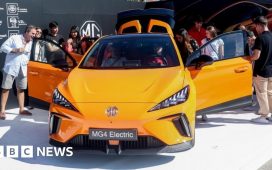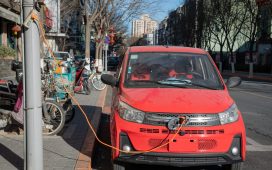According to a German media report, three candidates have the best prospects in the internal competition. Der Spiegel writes (without providing further details about sources) that these are the VW plant in Palmela, Portugal, the factory in Poznan, Poland, and Skoda’s main plant in Mladá Boleslav, Czech Republic. According to the report, the VW plant in the Slovakian capital Bratislava only has a very slim chance.
The traditional ‘planning round’ in the Volkswagen Group decides every year on the allocation of the plants of all Group brands on a five-year horizon. As the three small electric cars will launch in a few years – the premiere of the €25,000 electric cars built in Spain is initially scheduled for 2025/2026 – the planning round this autumn will likely determine where the €20,000 electric cars will be manufactured. VW’s German EV plants in Zwickau and Emden will probably not stand a chance despite their low capacity utilisation: they are “out of the question from the outset due to their higher costs,” says Der Spiegel.
Cost efficiency or regional proportionality?
The four €25,000 electric cars from VW (compact car and SUV), Cupra (compact car) and Skoda (SUV) are built in the Spanish plants in Martorell and Pamplona. As the VW battery subsidiary PowerCo is also building a battery cell factory in Sagunt near Valencia, where the cells for the upcoming small cars are to be manufactured, this would also speak in favour of a production site on the Iberian Peninsula for the €20,000 models – in this logic, the Portuguese plant would be the favourite. VW is currently building the Golf-sized T-Roc compact SUV there.
However, as much as VW looks at the figures regarding savings programmes and return targets, the Group’s decision-making is far more complex. “Regional proportionality, however, speaks against giving another important project to Southern Europe,” Der Spiegel writes.
On the other hand, the fact that two electric models, the Enyaq and, more recently, the Elroq, are already being built there speaks in favour of Skoda’s main plant in the Czech Republic. The Elroq, which was presented this week, is particularly in the spotlight. The compact electric SUV should cost the same as the corresponding Karoq combustion model when adjusted for equipment and be profitable. That speaks in favour of Skoda. The fact that PowerCo is not building the planned cell factory in Pilsen for the time being, meaning that the Czech VW plants are still dependent on external suppliers, could speak against Mladá Boleslav. However, purchasing batteries from pure cell manufacturers can also have advantages: How quickly and at what cost production can be brought up and running in a new factory is a major variable – just look at Northvolt in Sweden.
According to the report, the third candidate is the VW Commercial Vehicles plant in Poznan, where the VW Caddy and the larger Crafter are currently built. The company has always focussed on efficient production of light commercial vehicles. In addition, VWCV has already produced bodies for other Group brands in the past, even for Porsche – for example, for the Panamera, the bodies of the first generation initially came from Hanover. The battery issue in Poznan would probably be similar to the Skoda plant – the company would have to rely on external suppliers. Still, there are numerous cell factories from Asian manufacturers in Poland and Hungary.
Der Spiegel also claims to have learnt another detail about the upcoming 20,000-euro electric cars. The company is considering “doing away with the infotainment screen that is obligatory in modern cars, similar to the now discontinued e-Up, the informal predecessor of the €20,000 car.” To do away with the entire screen (while the competition probably still offers such a feature) would be a big step. In some inexpensive models, it is already standard for the driver’s own smartphone to take over the central tasks, such as music streaming or navigation. However, a display is usually still built into the vehicle that functions as a display/touchscreen for Apple CarPlay or Android Auto.
spiegel.de (in German)








